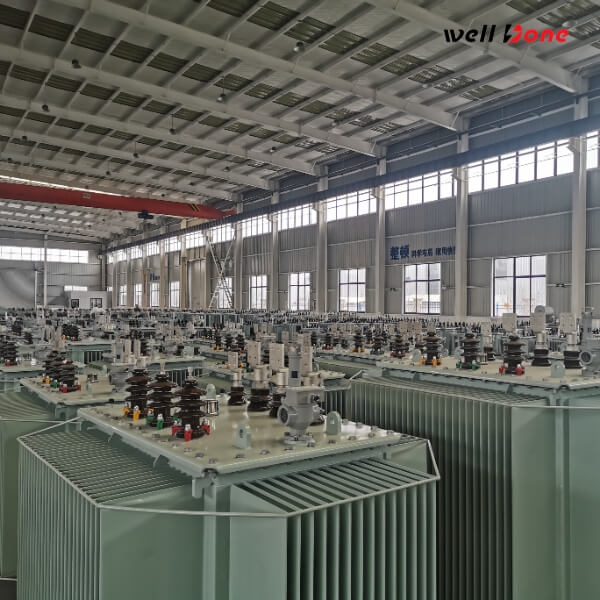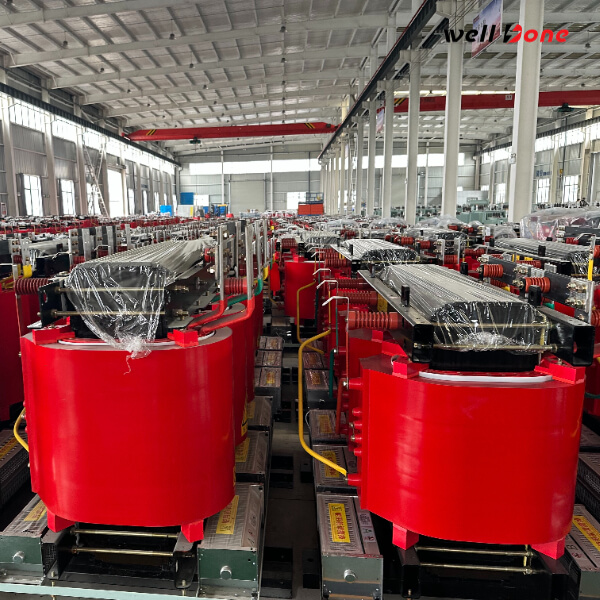Hot Keywords:
- All
- Product Name
- Product Keyword
- Product Model
- Product Summary
- Product Description
- Multi Field Search
Views: 0 Author: Site Editor Publish Time: 2025-10-21 Origin: Site









Transformers are mechanical-electrical systems that commonly radiate audible sound. This article explains why they make noise, how to diagnose the dominant sources on site, and how to choose and sequence fixes that balance cost, complexity and long-term effectiveness. You’ll get an actionable onsite test plan, a prioritized mitigation matrix, and a sample maintenance schedule so you can move from “identify” to “solve” without second-guessing.

Magnetostriction in the core. Magnetic flux cycles cause tiny periodic length changes in the steel core. For a 50 Hz system the mechanical excitation often appears at 100 Hz and harmonics — this is the frequent tonal hum people hear.
Laminate and clamping issues. Loose or unevenly clamped core laminations generate friction and amplify vibration.
Resonant structural panels. Thin oil-tank walls, radiators and removable covers can resonate and act like sounding boards.
Auxiliary machinery (fans, pumps). Cooling fans and oil pumps add broadband and tonal contributions, especially at higher loading.
Electrical waveform distortion. Harmonics or DC bias in the magnetizing current increase excitation forces and add nonstandard frequency components.
Mechanical attachments and accessories. Loose bolting, poor gasket seating, and unsecured brackets produce rattles under load or during OLTC actions.
Measure A-weighted SPL at standard distances (1 m, 3 m, facility boundary) at idle, rated load and high-temperature conditions. Note weather/wind.
Capture frequency spectrum (FFT) of the noise — mark strong peaks (typical valve: 100 Hz, 200 Hz, etc.). Peaks tied to mains harmonics point to magnetic origin.
Perform accelerometer tests on core clamp, tank wall, and radiator panels to find high-vibration spots and resonant frequencies.
Temporarily isolate/turn off auxiliaries (fans/pumps) one at a time and record SPL change.
Inspect all fasteners, core clamp bolts, gasket seating and radial supports for looseness or corrosion.
Record OLTC operation noise and timing; document any impulsive or transient sounds.
Safety note: any physical inspection near live parts must follow lockout/tagout and electrical safety procedures.
Torque and tighten: re-torque core clamp bolts and check lamination pressure. Many noise issues are mechanical.
Local damping: apply oil-compatible damping tapes or bonded damping patches on non-load-bearing tank panels.
Anti-vibration pads: insert resilient pads under fan units, pumps or between tank and baseplate.
Balance/replace fan blades & bearings: reduce aero-noise and mechanical vibration at source.
Add structural stiffeners to resonant panels or weld ribs in a controlled way to shift resonance above problematic bands.
Base isolation: retrofit elastomeric mounts or spring isolators to reduce structure-borne sound transmission.
Harmonic mitigation: install passive/active filters or correct load imbalance to reduce electrical excitation.
Partial enclosure: ventilated acoustic hood for fans/pumps while preserving cooling.
Acoustic enclosure for the transformer: full enclosures are effective but require engineered ventilation and fire-safety integration.
Replace with low-noise core/winding design: specify low magnetostriction steels, tighter lamination techniques, and proprietary low-noise core geometries at procurement.
Active noise control (ANC): technical and expensive; considered only for critical low-frequency tonal mitigation in sensitive sites.

Baseline: SPL + spectral + vibration measurements.
Quick fixes: tighten, damp, tweak fans, retest. If noise targets met → document and schedule maintenance.
Intermediate actions: structural damping, isolation, harmonic correction; retest after each measure.
Major works: if residual noise still exceeds limits, evaluate enclosure or replacement; consult manufacturer for warranty/retrofit guidance.
Verification: final standardized noise test and short report (conditions, instruments, results).
Quarterly: visual, fastener torque check, fan bearing inspection.
Biannual: SPL spot check and FFT comparison to baseline.
Annually: accelerometer survey and OLTC mechanical check; replace worn damping patches.
As-needed: harmonic scanning after major load changes.
Provide a guaranteed A-weighted SPL at 1 m / 5 m under specified load and ambient conditions.
List core steel grade and manufacturing steps to control magnetostriction.
Describe damping/assembly measures taken in manufacture (laminate clamping, potting, etc.).
Show past retrofit references with before/after SPL data.
Q: Can changing transformer oil reduce hum?
A: Oil quality has minor direct impact on acoustic emission; replacing oil won’t fix magnetostrictive or structural resonance issues. It’s more relevant to cooling and insulation performance.
Q: Will acoustic barriers cause overheating?
A: If poorly designed, yes. Any barrier must be engineered to maintain required airflow and thermal limits.
Q: Is active noise control practical?
A: Only for specialized, costly applications (low-frequency tones in sensitive environments); conventional passive measures are usually more cost-effective.
Realistic, cost-effective noise control follows a measured path: quantify first, fix the easy mechanical problems, then apply structural or electrical remedies if needed. Most field noise exceedances are reduced substantially by routine mechanical maintenance, damping patches and fan upgrades. When those don’t suffice, work with the transformer manufacturers on engineered retrofits or replacement with a low-noise design.